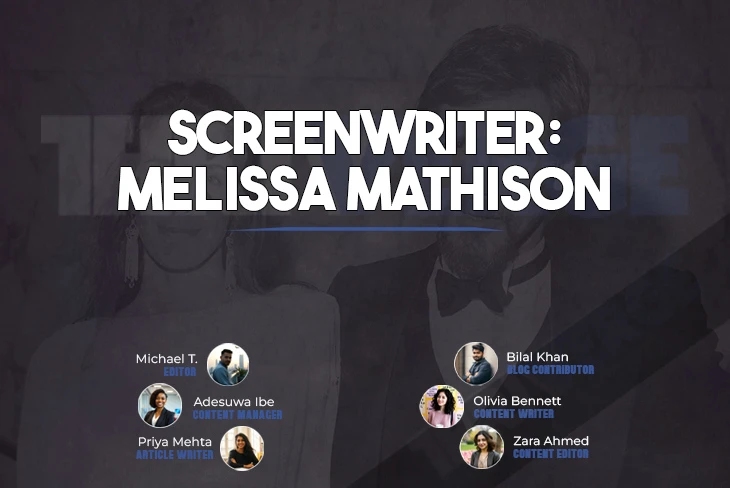
Have you ever wondered who was behind the magical words that brought E.T. to life? Or who crafted the enchanting tale of “The Indian in the Cupboard”? Meet Melissa Mathison, a name that might not be as familiar as Steven Spielberg or Harrison Ford, but one that’s equally important in the world of Hollywood. This talented screenwriter left an indelible mark on the film industry, particularly in the realm of children’s cinema. But here’s a surprising fact: Mathison wrote only a handful of screenplays throughout her career, yet each one became a beloved classic. How did she manage to achieve such an impact with so few words?
Let’s start a journey through the life and career of this remarkable woman, exploring how her unique vision and storytelling prowess shaped some of the most memorable films of our time.
Early Life and Education
Melissa Marie Mathison was born on June 3, 1950, in Los Angeles, California. Growing up in the heart of the entertainment industry, she was exposed to the world of storytelling from an early age. But Mathison’s path to becoming a screenwriter wasn’t as straightforward as you might think.
She attended the University of California, Berkeley, where she studied political science. It’s interesting to note that her academic background wasn’t in film or creative writing. So, how did she end up in the world of cinema? Well, sometimes life has a funny way of leading us to our true calling.
During her college years, Mathison worked as a babysitter for Francis Ford Coppola’s children. This seemingly ordinary job turned out to be the key that unlocked the door to her future career. It’s a reminder that you never know where opportunities might arise – even from the most unexpected places!
Through her connection with Coppola, Mathison got her first taste of the film industry. She worked as an assistant on some of his projects, including “The Godfather Part II” and “Apocalypse Now”. Can you imagine being part of such iconic films right at the start of your career? It must have been an incredible learning experience.
Career Beginnings
Mathison’s official entry into screenwriting came in 1979 with “The Black Stallion”. But how did she go from being an assistant to writing a full-fledged screenplay? Well, it turns out that Mathison had been honing her writing skills all along, even if she wasn’t aware of it at the time.
Her experience working on film sets, combined with her natural storytelling abilities, gave her a unique perspective. She understood not just how to write a story, but how that story would translate to the screen. This is a skill that many aspiring screenwriters struggle with, but for Mathison, it seemed to come naturally.
“The Black Stallion” was a critical success, praised for its beautiful imagery and heartfelt storytelling. It’s worth noting that this was a children’s film – a genre that would become Mathison’s specialty. Why do you think she was drawn to stories for young audiences? Perhaps she could see the world through a child’s eyes, or her knack for capturing the magic and wonder of childhood.
This early success set the stage for what would become a remarkable, if somewhat unconventional, career in Hollywood. Mathison didn’t churn out screenplay after screenplay like some writers. Instead, she took her time, carefully choosing her projects and pouring her heart into each one.
Major Works
Let’s take a closer look at some of Melissa Mathison’s most significant contributions to cinema:
1. “The Black Stallion” (1979)
This was Mathison’s debut as a screenwriter, and what a debut it was! Based on the novel by Walter Farley, the film tells the story of a boy and a wild Arabian stallion who form a deep bond after being shipwrecked on a deserted island.
What made this screenplay stand out? For one, it relied heavily on visual storytelling, with long sequences that had little to no dialogue. This is a challenging feat for any writer, but Mathison pulled it off beautifully. The film’s success showed that she had a special talent for translating written words into powerful visual narratives.
2. “E.T. the Extra-Terrestrial” (1982)
This is undoubtedly Mathison’s most famous work, and for good reason. The story of a lonely boy who befriends an alien touched hearts around the world and became a cultural phenomenon. But did you know that Mathison wrote the script in just eight weeks?
Steven Spielberg, who directed the film, was so impressed with her work that he barely changed a word of her original draft. This is almost unheard of in Hollywood, where scripts often go through numerous rewrites. It’s a testament to Mathison’s skill and her deep understanding of storytelling.
The screenplay earned Mathison an Academy Award nomination for Best Original Screenplay. While she didn’t win, the film’s enduring popularity speaks volumes about the quality of her writing.
3. “The Indian in the Cupboard” (1995)
Based on the children’s book by Lynne Reid Banks, this film showcased Mathison’s ability to adapt existing stories for the screen. The tale of a boy who discovers he can bring his toys to life by placing them in a magical cupboard is both whimsical and thought-provoking.
Mathison’s screenplay deftly handled complex themes like cultural understanding and the responsibilities that come with power, all while maintaining a sense of childlike wonder. It’s a great example of how children’s stories can tackle serious issues in an accessible way.
4. “Kundun” (1997)
This biographical film about the 14th Dalai Lama marked a departure from Mathison’s usual fare. It was more adult-oriented and dealt with weighty historical and political themes. However, Mathison’s trademark sensitivity and attention to emotional detail were still very much present.
The film also reflected Mathison’s interest in Tibetan culture and her activism for Tibetan independence. It’s a reminder that screenwriters often infuse their work with their passions and beliefs.
5. “The BFG” (2016)
Mathison’s final screenplay was an adaptation of Roald Dahl’s beloved children’s book. Sadly, she passed away before the film was completed, but her work lives on in this magical tale of a girl who befriends a Big Friendly Giant.
Once again, Mathison collaborated with Steven Spielberg on this project, bringing their creative partnership full circle. The film serves as a fitting final chapter to her career, showcasing her enduring ability to capture the essence of childhood wonder and imagination.
Collaborations with Steven Spielberg
The partnership between Melissa Mathison and Steven Spielberg was one of the most fruitful in Hollywood history. But how did these two creative minds come together?
It all started with “E.T.”. Spielberg was impressed by Mathison’s work on “The Black Stallion” and approached her to write the screenplay for his alien adventure. The result was magic – Mathison’s heartfelt writing perfectly complemented Spielberg’s visual storytelling.
What made their collaboration so special? For one, they shared a similar sensibility when it came to stories about childhood and family. Both had a knack for creating narratives that appealed to both children and adults.
Mathison also brought a unique perspective to Spielberg’s work. She had a talent for creating fully realized female characters, something that wasn’t always present in Spielberg’s earlier films. In “E.T.”, for example, the character of Gertie (played by Drew Barrymore) is just as important to the story as her brother Elliott.
Their collaboration extended beyond “E.T.” and “The BFG”. Mathison also worked on the “Amazing Stories” TV series, which Spielberg produced. The two had a deep mutual respect and understanding.
Spielberg once said of Mathison, “Melissa had a heart that shined with generosity and love and burned as bright as the heart she gave E.T.” It’s a beautiful tribute to a writer who brought so much warmth and humanity to her work.
Personal Life
While Melissa Mathison’s professional life was filled with success, her personal life had its share of ups and downs. In 1983, she married actor Harrison Ford, and the couple had two children together: Malcolm and Georgia.
Mathison’s marriage to Ford was a high-profile one, given Ford’s status as one of Hollywood’s biggest stars. But did you know that Mathison was just as involved in humanitarian causes as she was in filmmaking? She was a dedicated activist for Tibetan independence and worked closely with the Dalai Lama on various projects.
Despite the glamour of Hollywood, Mathison seemed to prefer a more low-key lifestyle. She wasn’t one for the spotlight, choosing instead to let her work speak for itself. This approach allowed her to maintain a level of privacy that’s rare in the entertainment industry.
Unfortunately, Mathison and Ford’s marriage ended in divorce in 2004 after 21 years together. It was a difficult period, but Mathison continued to focus on her writing and her activism.
Health Struggles and Final Years
In her later years, Melissa Mathison faced significant health challenges. She was diagnosed with neuroendocrine cancer, a rare form of the disease. Despite this, she continued to work on projects that were close to her heart.
Her final screenplay, “The BFG”, was written during this period. It’s a testament to her dedication and passion for storytelling that she continued to create even in the face of serious illness.
Sadly, Melissa Mathison passed away on November 4, 2015, at the age of 65. Her death was a great loss to the film industry and to all those who her work had touched.
Many of her colleagues and friends shared tributes in the wake of her passing. Steven Spielberg said, “Melissa had a heart that shined with generosity and love and burned as bright as the heart she gave E.T.” It’s a fitting tribute to a writer who brought so much warmth and humanity to her work.
Melissa Mathison’s funeral was a private affair, attended by family and close friends. It reflected the quiet dignity with which she had lived her life, away from the glare of Hollywood’s spotlight.
While Melissa Mathison’s net worth at the time of her death isn’t publicly known, her legacy is far richer than any monetary value. She left behind a body of work that continues to inspire and entertain audiences around the world.
Conclusion
Melissa Mathison’s journey from babysitter to acclaimed screenwriter is a testament to the power of talent, hard work, and seizing opportunities. Her ability to capture the magic of childhood and the complexity of human emotions set her apart in the world of Hollywood.
Throughout her career, Mathison demonstrated a unique gift for children’s cinema. She didn’t just write for kids; she wrote stories that resonated with people of all ages. Her screenplays often dealt with themes of friendship, family, and the wonder of the unknown – universal concepts that touch us all.
What inspired Melissa Mathison’s writing? Perhaps it was her own experiences, her observations of the world around her, or her innate understanding of human nature. Whatever the source, her inspiration translated into stories that have stood the test of time.
The influence of Melissa Mathison on modern screenwriting cannot be overstated. Her approach to storytelling – emotionally resonant, visually driven, and respectful of her audience regardless of age – has inspired countless writers who came after her.
As we look back on Melissa Mathison’s biography and career highlights, we see a woman who may not have been prolific in quantity, but whose quality of work was unmatched. Each of her screenplays was a carefully crafted gem, polished to perfection.
In the end, Melissa Mathison’s legacy lies not just in the films she wrote, but in the emotions she stirred and the imaginations she ignited. Through her words, she taught us to look at the world with wonder, to believe in the power of friendship, and to never lose touch with the child within. And isn’t that, after all, what great storytelling is all about?









